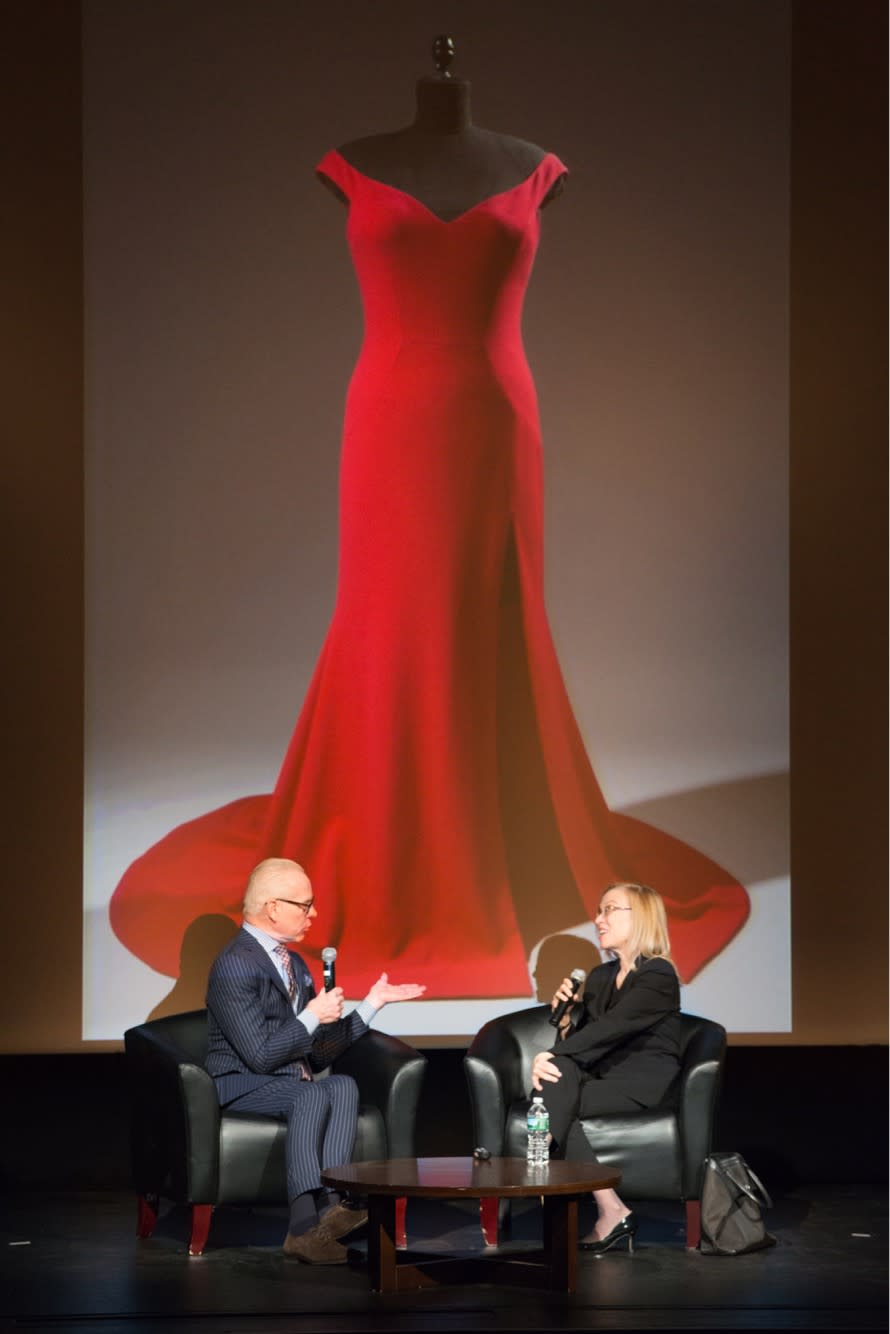We independently evaluate the products we review. When you buy via links on our site, we may receive compensation. Read more about how we vet products and deals.
'I don't dress furniture': Some designers refuse to dress women over size 12

The fashion circuit has moved on from New York Fashion Week to the European side of the biannual fashion-month marathon, where London, Milan, and Paris feature rail-thin models on runways. While that’s happening, New York continues to lead the charge towards inclusion, this time via a symposium that the Fashion Institute of Technology hosted on Feb. 23 called “Fashion and Physique,” analyzing how body ideals originated and have shifted over two centuries.
In a discussion between FIT museum director and chief curator Valerie Steele and Tim Gunn, Project Runway personality and longtime fashion insider, the pair reflected on the historical origins of plus-size fashion (“stout size” in the early 20th century) and how the industry addresses inclusivity today. While designers cite various reasons for not offering plus-size options to its customers, Steele recalled an instance in which one designer, who remained anonymous, was blunter than most.
“They’ll say, ‘I don’t want her wearing my clothes,’” Steele recounts, referring to designers dressing plus-size women, citing what Steele calls the “contamination effect” that curvy (i.e. normal) women have on a brand’s perceived messaging. “He was talking about a size 12 model and he said, ‘I don’t dress furniture.’” (Worth noting: the average American woman wears a size 16.)
A post shared by Yaara Keydar (@yaaronet) on Feb 14, 2018 at 1:05pm PST
The memory drew gasps from an audience of a few hundred people who attended the sold-out event at the fashion school in Manhattan. The symposium, held in conjunction with the ongoing exhibit of the same name (on display until May 5), brought together some of the industry’s pioneering forces in the body-positivity space, including designers Christian Siriano and Chromat‘s Becca McCharen and body-positive activists Lauren Chan and Iskra Lawrence.
It was an illuminating morning for most of the people in attendance, judging by the applause, exclamations, and laughter that reverberated around the auditorium. Emma McClendon, who curated the museum’s exhibit, schooled the audience on the history of body ideals, noting that while a common misconception exists that women were once smaller than they are today, “it is not our bodies that are wrong; it is the current fashion system that is flawed.”
Siriano explained why fashion struggles to agree upon sizes (“A corseted dress is going to fit differently than an off-the-shoulder sweater in marino wool. Fabrics are important to think about with sizing, and the retailers are now understanding as well. … They may need to order a larger size range based on how a particular garment fits.”)
And most panelists agreed that, with the exception of a few names like Nordstrom, retailers are missing out on a lucrative opportunity to serve most women.
A post shared by Emil WilbekIn (@emilwilbekin) on Jan 29, 2018 at 12:59pm PST
To be sure, the fashion industry’s maintenance of the thin white woman ideal (as evidenced everywhere from runways to street style galleries) is one that is held up not only by designers, but by fashion media and casting agencies. This was a common refrain during the event. While FIT’s exhibit might help us understand how we got to where we are — a world of waist trainers, retouched photos, and systematic exclusion — it’s up to today’s trailblazers to pave the way for a better fashion future.
“The good thing is that we’re talking about this, and I don’t think it’s going to go away,” Gunn said. “It’s about the semiotics of clothes: The clothes we wear send a message about how the world receives us. The more options we have, the more we can control that.”
Read more from Yahoo Lifestyle:
Follow us on Instagram, Facebook, and Twitter for nonstop inspiration delivered fresh to your feed, every day.

